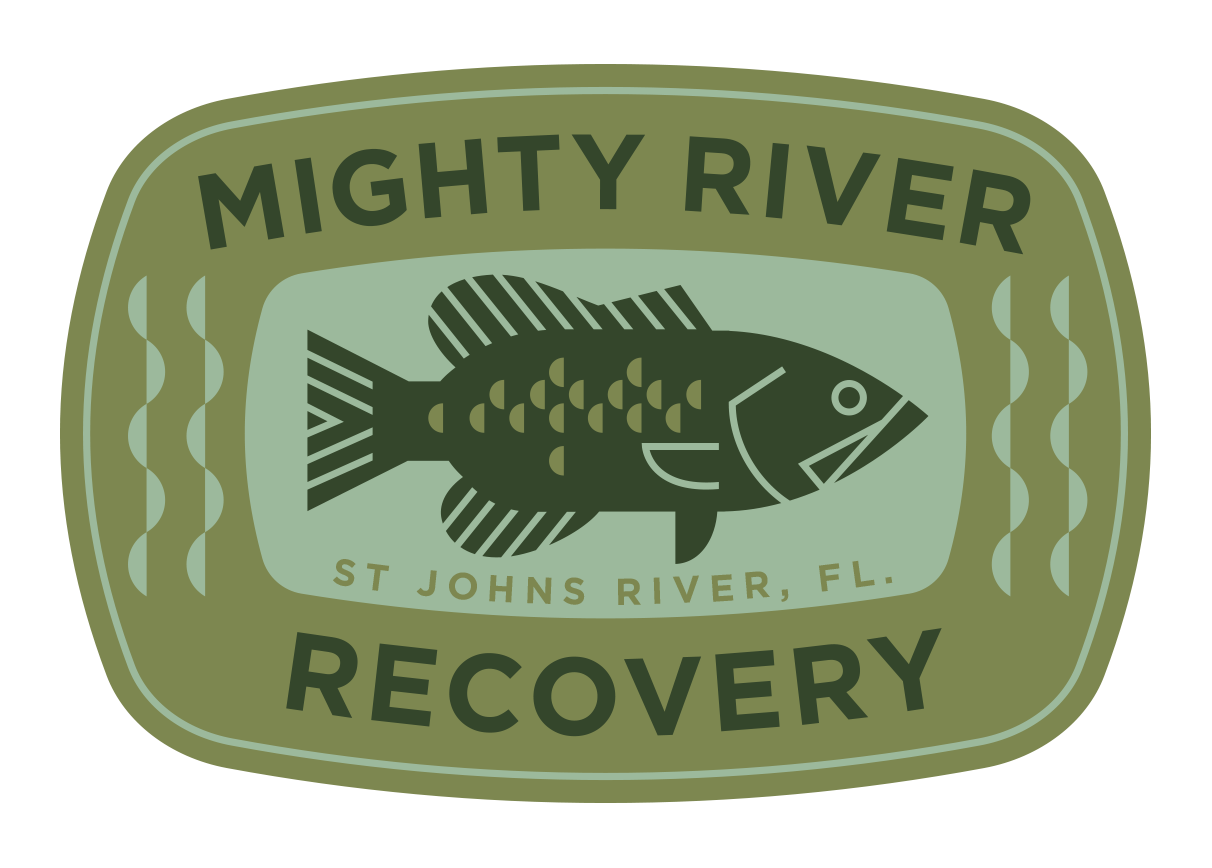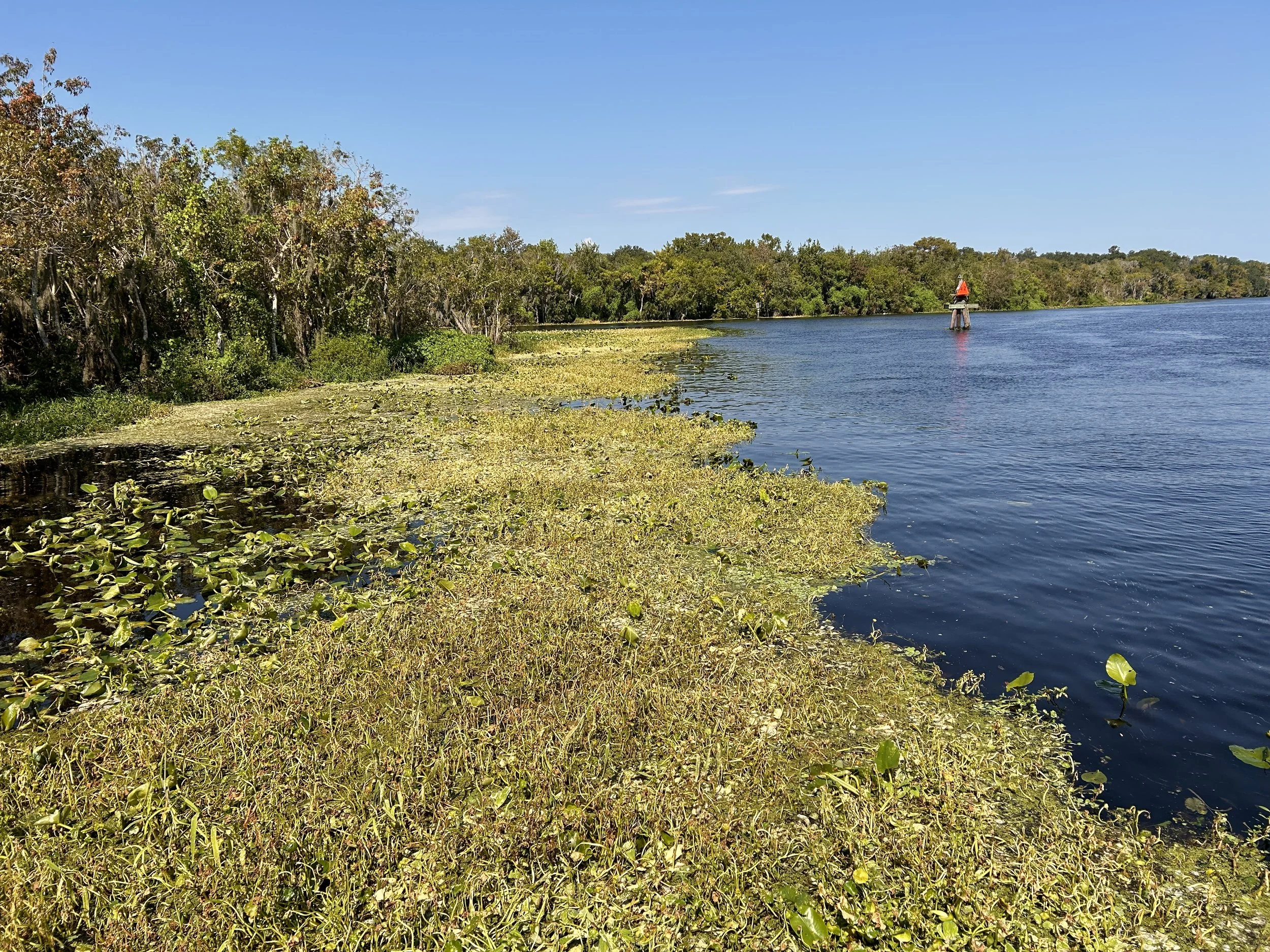Manager Series: US Army Corps of Engineers (USACE)
In this edition of the Management Series, we learn more about the role of the US Army Corps of Engineers (USACE).
The USACE, Jacksonville District, is responsible for a large number of projects affecting fish and wildlife habitat. According to their website, this group works to:
Ensure navigable harbors and channels
Reduce flood risks
Restore ecosystems
Protect wetlands
Stabilize Shorelines
Provide recreational opportunities
Respond to natural disasters and emergencies
Regarding the St. Johns River, a large amount of the USACE work focuses on maintaining navigable waters and reducing flood risk. It’s important to point out: the USACE is tremendously important, aiding Floridians in everything from disaster management to national security issues.
The primary concern of Mighty River Recovery, in regard to practices of the USACE, centers on invasive plant control through herbicide application, aka “spraying.” Herbicide application continues to be the primary method used by the USACE to control plants like water hyacinth, water lettuce and Alligator weed.
USACE applying herbicide
The USACE is responsible for nearly all invasive plant management on the river north of state route 50, near Puzzle Lake, with the exception of Lake Jesup (managed by the Florida FWC).
While this practice is necessary to control invasive plants in our current capacity, Mighty River Recovery questions the impact on the ecosystem.
A little biology is important here. Scientific study confirms that the most important habitat on Florida’s freshwater systems are the shallow plant communities. These are integral to the success of everything from insects to alligators. This shallow zone - termed the littoral zone - acts as a nursery and feeding area to gamefish, invertebrates, manatees and more. Science proves that littoral zone plant communities are directly responsible for the health of a water body. Take out the plants, and you take out the success of nearly everything that swims.
On most of today’s St. Johns River, nearly all of the littoral zone plant communities are made up of both native and exotic plants. The exotic plants grow rapidly, impacting navigation and increasing flood risk. In order to manage these plants, the USACE utilizes herbicides that kill both the exotics and the available Florida natives. What is left following most treatments are severely reduced levels of all types of vegetation, compromising or eliminating the littoral zone.
The littoral zone on the St. Johns River
Led by our Fisheries and Habitat team - consisting of fisheries scientists and biologists - Mighty River Recovery concludes that no habitat manipulation is more destructive to fish and wildlife populations than reduction of the littoral zone.
Since the formation of Mighty River Recovery, we have been in discussions with the USACE regarding these practices. We have also monitored their methods throughout 2024.
To sum up, the USACE continues to rely on herbicide application due to its reported low cost comparative to other methods. In fairness, no organized priority has been placed on investigating other methods of plant control. Mighty River Recovery is here to raise that priority.
In order to educate our followers, it’s necessary to point out several pieces of misinformation regarding herbicide applications on the St. Johns River. While the chemicals used are often scrutinized, little or no research exists on the extended use of these products and the long-term effects of repressed habitat. Consider:
When questioned on the need for aggressive management, the USACE refers to the Center for Aquatic Plants under UF / IFAS. However, studies relied on were done in controlled, not natural, environments. In fact, no published studies have been done on the St. Johns River in regard to plant management and long-term impacts.
It’s often broadcast that the USACE spot-treats only exotic, invasive plants, allowing natives to continue to flourish. While this is sometimes the case, we have direct video evidence of indiscriminate mass-spray events affecting all plants.
Furthermore, the USACE states that the herbicides they use don’t harm native plants, showcasing native pennywort as an example (YouTube). This statement is absolutely false.
The USACE projects a desire to explore options besides chemical spraying. Numerous sources, including their own online campaigns, list biological and mechanical plant control methods. In fact, none of these methods are currently used in any capacity on the St. Johns River, according to our research.
Finally, in regard to wetland protections, the USACE actions along the St. Johns River routinely destroy native plants within wetland buffer zones. Numerous MRR videos outline this.
Results of a 2024 USACE herbicide treatment, affecting all plants
To sum up, the roles of the USACE are vital to the health and function of the St. Johns River, including their management of invasive plants. The methods used, however, do not consider the long-term impact on the river’s ecosystem. Studies confirm that interest and use of the St. Johns River has declined for decades, directly coinciding with declining game fish numbers as a result of continued habitat loss.
Habitat declines, fish and game numbers decline, interest, tourism and dollars decline…yet management remains unchanged.
We’ll continue to work to persuade this group to investigate the impacts of herbicides and consider other options, as we see it in the best interest of our Members.
Through it all, you can count on us for transparent information to keep you informed.



